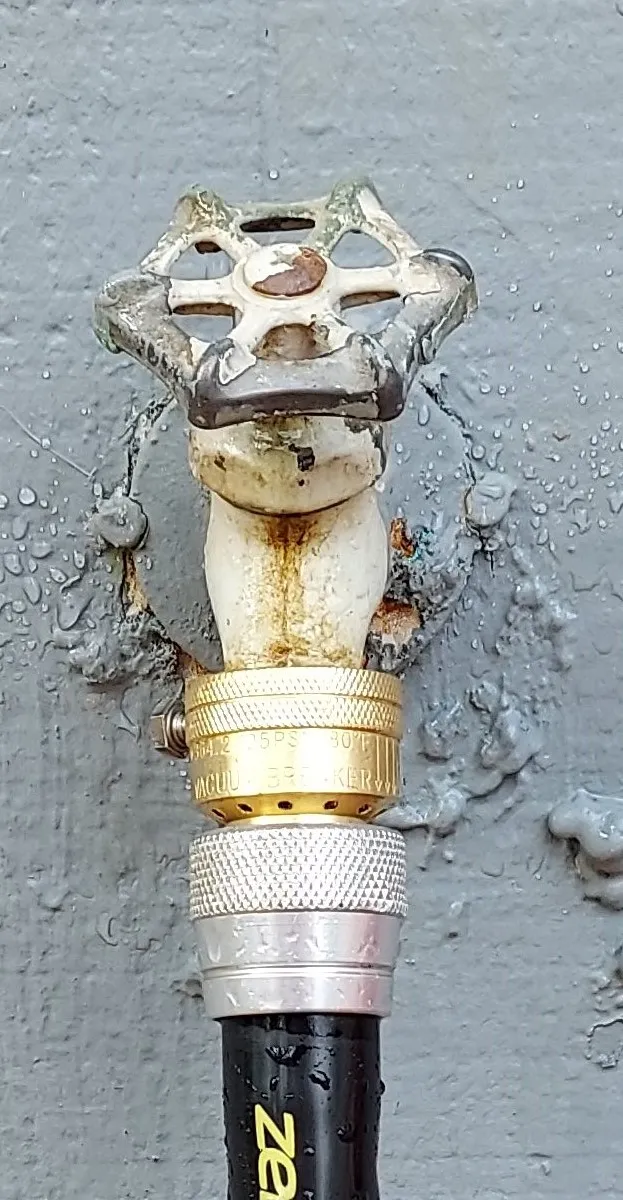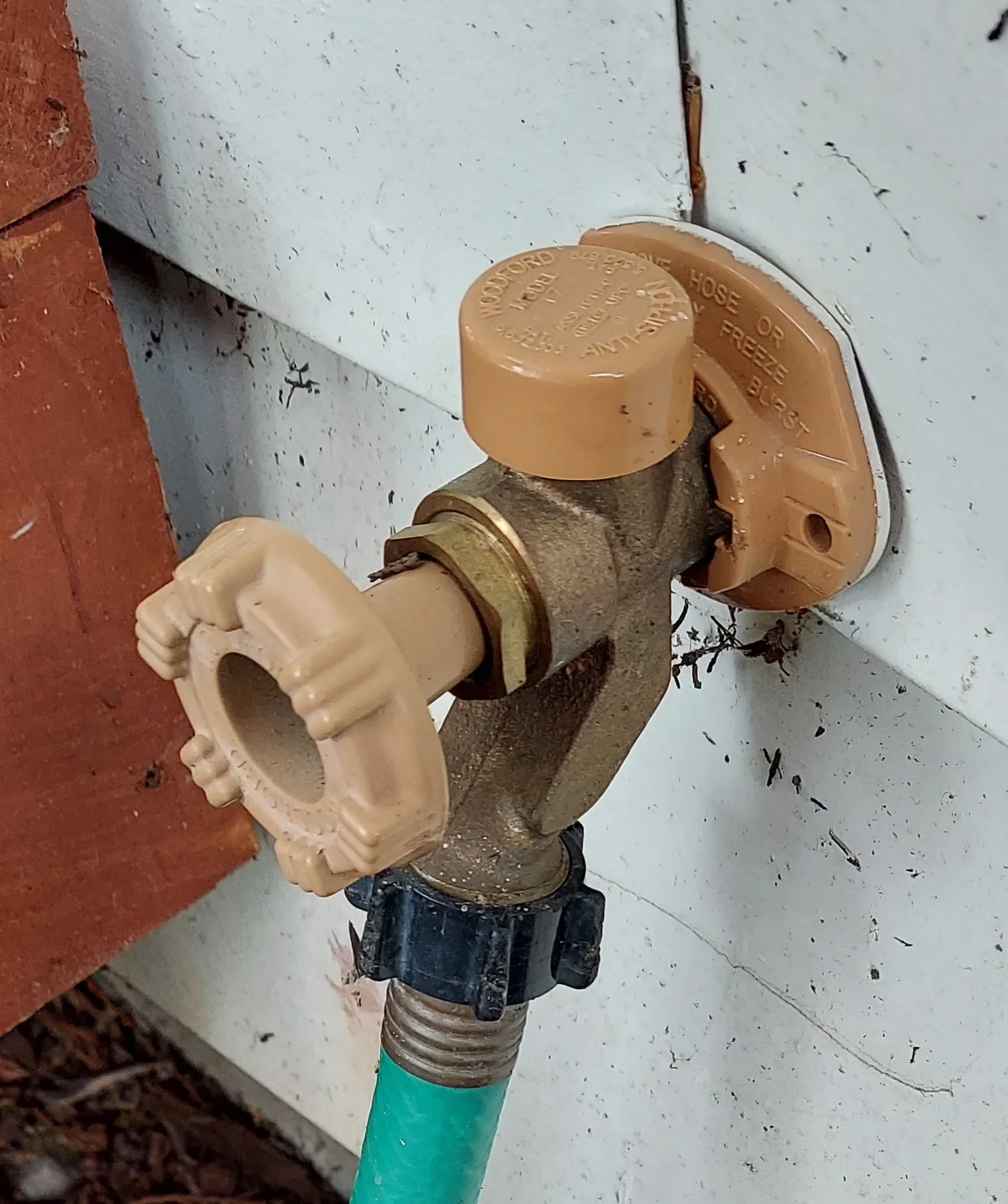How to Hand-Water Efficiently
Watering your garden by hand can be water-efficient and cost-effective if you keep these three simple tips in mind:
- Add a hose nozzle with a shut-off feature. Water flows from a garden hose at an average of 5-7 gallons a minute. Attaching a water-efficient nozzle to your hose will make sure the water is only on when you need it.
- Give thirstier plants a little more water between regular watering times. You can also place plants that need more water closer to your hose bib so that it is easier to water them.
- Apply the amount of water your soil can absorb. Water thoroughly, but infrequently. If runoff or puddling occurs, break longer watering sessions into several short sessions. This allows water to soak into the soil between each session.
Seasonal Maintenance Tips
- Inspect your hose, hose nozzle, and / or sprinkler for leaks and general wear. For example: is the metal end of your hose bent or covered in dirt or debris? Is the washer in good condition? If not, they could cause your watering system to leak.
- Put your system through a test-run. This will tell you if your connections are properly tightened and whether there are any leaks or other issues.
- Use a shut-off nozzle. Water flows from a garden hose at an average rate of 5 - 7 gallons per minute! Adding a shut-off nozzle can save you water every time you water your garden (or wash your car) this summer.
- Inspect your hose, hose nozzle, and/or sprinkler for leaks and general wear. The end of the season is a great time to replace worn-out hoses, nozzles, and connections.
- Winterize your system by emptying it of water and turning it off for the season. Put garden hoses away and insulate outdoor pipes. Empty and disconnect your garden hoses from outdoor faucets. Also be sure to insulate your outdoor faucets and any exposed pipes for the winter.
- Clear debris from your gutters and downspouts. This prevents overflow and direct the water from your roof to where you want it to go during the rainy season.
Keep your watering system in tip-top shape
Regularly check for leaks in your hose and anything that it connects to, like another hose, sprinkler, or hose nozzle. Making sure that your hand-watering system is leak-free is one the of most important things you can do to use water wisely. A dripping spigot or small hole in your hose can waste hundreds of gallons of water each month. That can add up to a lot of wasted water and money if not fixed! Watch this segment from KATU Television’s AM Northwest to see how to test your hand watering system.
Know how much water you are using
The greatest waste of water is watering landscapes too much, too often. Here's how to figure out how much water you are using:
- Hose nozzle: Grab a bucket and time how long it takes your hose nozzle to fill the bucket. This will tell you how many gallons of water you are using each minute. For example, if it takes 2 minutes to fill up a five-gallon bucket, then you know that your hose uses 2.5 gallons per minute. (5 gallons ÷ 2 minutes = 2.5 gallons/minute)
- Sprinkler attachment: You will need 15 minutes and two flat-bottomed cans to measure your sprinkler’s water use. The process is the same for in-ground sprinklers and sprinkler attachments for garden hoses.
Create a watering schedule
Once you know how much water your system uses, use this information to create a watering schedule. Water plants that have been in the ground for a couple of years twice a week rather than every day during the summer. You may need to water newer plantings, potted plants, and those located under trees or overhangs more often.
The weather will affect how much water your landscape needs. Use the Weekly Watering Number to guide you on how much to water each week.
Water deeply a couple of times each week
Generally, it is better to water plants deeply a couple of times a week rather than watering a little bit each day. Doing this will help your plants create strong root systems that are better able to find the water they need. Your goal is to get water a few inches down into the soil where the plant’s roots are.
You can tell if you have watered deeply enough by using a hand trowel or screwdriver to test your soil moisture. To do this, push your screwdriver or trowel into the soil in a couple of different locations. If it goes into the soil easily, your soil has good moisture content.
Vacuum Breakers
Anti-siphon valves, or vacuum breakers, stop contaminants from fertilizers and pet waste from entering your home or the public water supply. Some water spigots have built-in anti-siphon valves, but if yours does not, they cost around $5 from the hardware store.
Below pictured left: add-on spigot anti-siphon valve; right: built-in spigot anti-siphon valve.


